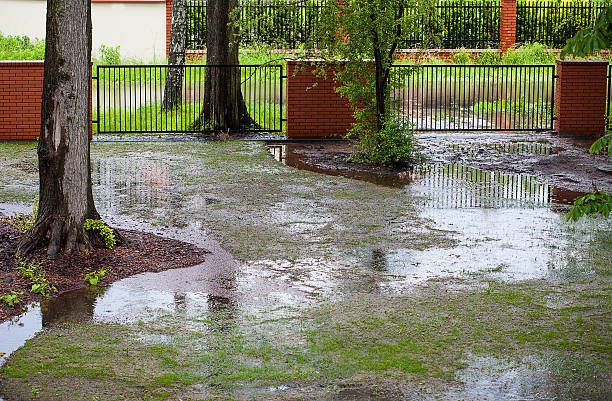Extreme weather events, natural disasters, long periods of drought, rain and cold have strong effect on the soil under the structures and on the foundation.
The summer of 2018 was extraordinarily warm, and the heat lasted for a long time. At the same time, January was one of the coldest in history. While some people were exhausted from record high temperatures, other regions suffered from flooding. Rainstorms and cyclones had a devastating effect on many buildings and population in general.
How weather phenomena affect soil
Soil types vary by properties and their response to weather conditions, and they may have serious impact on load-bearing structures of buildings. Houses built on loose soil, sand and reactive clays (rising soils) may suffer the most due to seasonal or extreme rainfall, floods and drought (or cold).
Reactive clay expands when exposed to moisture and shrinks when drying. This is accompanied by soil splitting during long periods of drought and expansion during humid periods. Clay loses its porous structure as a result of freezing and expansion in cold weather.
Sand and loamy soils tend to subside due to rainfall, because water flushes off small particles and larger particles sink.
Filling material used in construction often consists of soil, but also other materials, such as brick or concrete fragments, also crushed construction materials. When water finds its way through such material and flushes away minor particles, it may cause the soil to sink. The effect of the process can be visually depicted as recess in the ground, whereas it may further deepen due to poor soil compaction and general condition of surrounding soil. In case of changes in the condition of soil under a structure, it can no longer support the foundation and the structures gradually start to sink. Building sinks either partially or entirely, but in any case, unevenly. This is called soil subsidence.
Another important factor is humidity level of the soil. For instance, clay soils in a region with moderate temperature are humid in general. But due to lasting dry weather, soil loses humidity and shrinks, causing the soil to sink. At the same time, such soil absorbs lots of water in rainy season or becomes impermeable. Along with freezing or (subsequent) melting, the soil may also cause risk of subsidence. In the event of a flood or broken utility line, water may carry away or scatter the soil, resulting in erosion and subsidence. All that can cause serious damage to the foundation and load-bearing structures of buildings and special structures.
Extreme climate conditions have become more frequent all over the world. For example, summer with record-breaking high temperatures affected the foundations of many buildings even in regions with mild marine climate (Great Britain). Continuous warm temperatures caused the surface water to dry out, which in turn caused subsidence of buildings. Therefore, insurance companies received from house owners exceptionally many complaints and claims regarding buildings subsidence.
How to combat soil subsidence
Fortunately, there are methods that allow quick, effective and sustainable protection against soil subsidence. Innovative solutions offer an alternative to traditional invasive and labour-intensive methods that use concreting of foundation or piles.
Patented URETEK resin injection technology does not require troublesome excavation works or cause major discomfort, because residents can often continue to live in the house while the works are performed.
Keep in mind that in case of discovering signs of subsidence you should immediately consult with specialists-designers or engineers-geotechnicians and obtain information and facts necessary for choosing appropriate solution.


